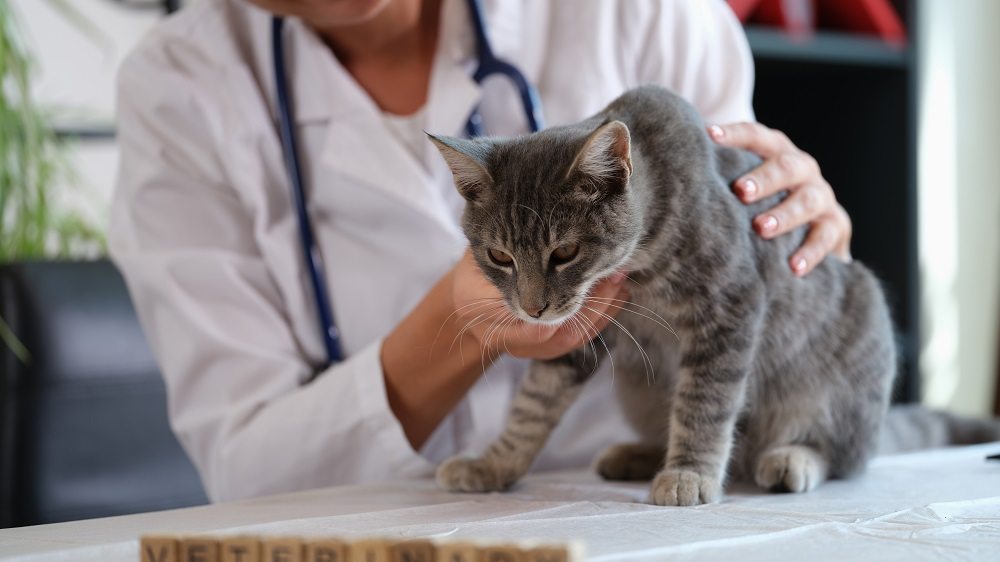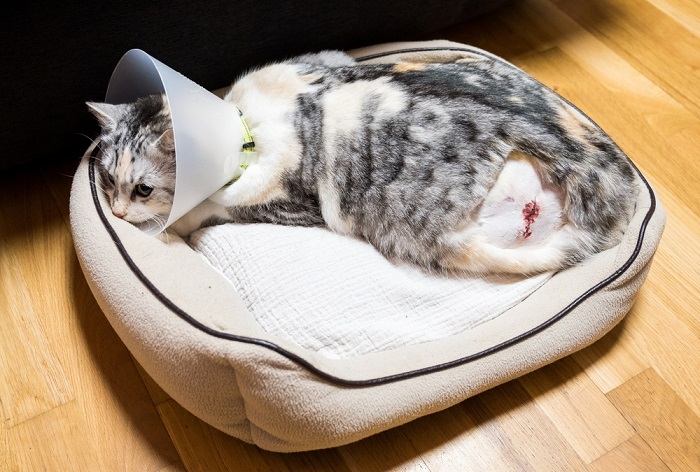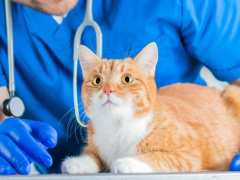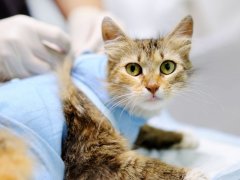
When is it the right time to euthanize a cat? Deciding when to let a beloved cat go is probably the most difficult decision cat owners have to make. To say that the decision for euthanasia is emotionally loaded, fraught with confusion, and difficult to make with logic is an understatement.
Factors To Consider When Deciding When to Euthanize a Cat
There are many factors to consider, and you may already be too emotional about the situation to think clearly. Let’s break down the most important issues to consider as you go into this decision-making process.
In general, people who don’t mindfully consider the question of euthanasia in advance often wait too long, keeping their loved one longer than they should because they can’t bear to part with their friend. This can cause an elderly cat or a cat with terminal disease to endure suffering in their final moments that could have been avoided.
In these cases, people often experience extreme guilt and sorrow for causing their friend to suffer. The mental and emotional anguish of waiting too long can be acute.
Perhaps you believe that a natural death is preferable to euthanasia. However, cats that experience natural death often experience significant suffering that could have been avoided with humane euthanasia, which is pain-free. When you can, it is always best to end the needless suffering of our pets, not prolong it for selfish reasons or out of ignorance.
Sometimes, the best choice for your cat is humane euthanasia, but how do you know when?
While the best way to make end-of-life decisions for your cat is in partnership with a veterinarian you trust, there are several quality-of-life factors that you can use to help you decide when it is time to say goodbye.
Also Read: How To Cope With Losing A Cat
Signs That It Might Be the Right Time for Euthanasia
1. Loss of Appetite
In human hospice, a patient’s desire and ability to eat is considered an important factor to measure their quality of life. Even though some cats will never lose their desire for food, many elderly, frail cats, or cats with terminal disease or pain will stop eating.
Refusing to eat can be an indication that it is time to consider euthanasia, especially in conjunction with terminal disease, if appetite stimulants have already been tried and aren’t helping if multiple types of foods have been offered, and/or the cat is losing weight.
2. Ability To Move Without Pain
Arthritis is extremely common in older cats. Signs of pain related to arthritis can include things like such as refusing to jump up on a counter or walk up and down stairs.
Signs of arthritis in cats can also can seem unrelated to joint pain, like not grooming, increased aggression when painful areas are touched, or inappropriately urinating and/or defecating outside the litterbox because the cat is too painful to get in and out of the box.
Cats can experience pain from conditions other than arthritis. Bladder inflammation due to stress, gut pain, and dental pain are all common sources of pain in cats.
The good news is that most of these conditions can be successfully treated, and respond well to pain medication, however, if you have tried pain medication or other therapies without success, or if your cat’s condition is severe or terminal, then it may be time put your cat down.
3. Inability To Control Elimination

Incontinence can lead to bedsores and worse in cats who lie in urine or feces because they can’t move or won’t move.
Urinary incontinence is the inability to control urination. This can happen because of weakened urethral sphincter muscles, or secondary to other conditions, like diabetes or kidney failure. Bowel incontinence is the inability to control bowels, and results in fecal incontinence.
Both are messy, annoying, and unsanitary conditions that decrease the wellbeing of everybody in the household. Furthermore, incontinence can lead to bedsores and worse in cats who lie in urine or feces because they can’t move or won’t move.
If a cat has untreatable urinary or fecal incontinence that is unmanageable or in conjunction with other terminal disease, then it may be time to consider euthanasia.
4. Uncontrolled and Severe Weight Loss
Many things, including cancer, kidney disease, hormonal disorders, and gastrointestinal conditions can cause weight loss. Severe weight loss in the face of a terminal condition is a clue that you may need to start thinking about euthanasia.
If your cat is happy, interacting with you, and still eating, then it is likely that your cat has a good quality of life and you won’t need to address the issue today, but at some point in the near future, before your pet’s quality of life starts declining.
5. Uncontrolled Vomiting or Diarrhea
Vomiting is a common problem in cats, so common, in fact, that some cat guardians think that it is normal for a cat to vomit daily. Let’s get one thing straight: daily vomiting means your cat feels sick, and should never be considered ‘normal’.
Inflammatory bowel disease, intestinal cancer, and hormonal conditions such as hyperthyroidism can cause chronic vomiting and diarrhea. If your cat has chronic vomiting and diarrhea that does not respond to treatment, it may be time to talk to your veterinarian about euthanasia.
6. End-Stage Kidney Failure

If you have a cat with advanced kidney disease who has stopped responding to therapy then it is time to talk to your veterinarian about end-of-life care.
Kidney disease is a common problem seen in older cats. While many cats respond well to treatment and can live happily for years with kidney disease, some cats get very sick with kidney disease.
Signs of advanced kidney disease include drinking a lot, peeing a lot or not peeing at all, vomiting, loss of appetite, weight loss, blindness from retinal detachment due to high blood pressure, mental depression, and hiding.
If you have a cat with advanced kidney disease who has stopped responding to therapy, doesn’t seem happy, has lost a severe amount of weight, or is not eating, then it is time to talk to your veterinarian about end-of-life care.
7. Heart Failure
The signs of heart failure can be subtle in cats, and include sleeping more, hiding, loss of appetite, unkempt fur, open mouth breathing, pale or white gums, and rarely, coughing.
Heart failure in cats tends to cause fluid build-up in the lungs. This causes difficulty breathing and can cause severe distress to a cat. If your cat has progressive heart disease that has stopped responding to treatment, then humane euthanasia is likely indicated to alleviate suffering.
8. Other Diseases
Other diseases that are progressive, untreatable, or terminal, such as cancer, blood disorders, feline dementia, severe skin disorders, or infectious diseases, like feline AIDS, leukemia, or feline infectious peritonitis are all conditions where the pet parent is going to have to make a decision to euthanize at some point.
In all these decisions, it is always better to make the decision earlier when a pet is still having some good days, then wait too late and cause the pet to suffer and decline. When in doubt on what is the best decision, ask your veterinarian for their opinion.
Critical Care Decisions

Sometimes, your cat may have a grave prognosis with or without treatment, or you may not be able to financial shoulder the burden of an unexpected emergency vet bill.
Sometimes, accidents or emergencies happen, leaving you little time to think or make decisions about your cat’s life. These can be the hardest because they are so unexpected.
Urinary blockage in a male cat, being hit by a car, abscesses, and poisonings are some of the many reasons why you might end up in an emergency clinic with your cat.
Sometimes, your cat may have a grave prognosis with or without treatment, or you may not be able to financial shoulder the burden of an unexpected emergency vet bill.
In these cases, if you are counseled to choose euthanasia to end suffering, it feels devastating, but you are still making the best choice for your cat that you can in the moment, and it is important to not beat yourself up.
The AVMA is a good resource for financial assistance with vet bills.
In general, when a pet has more bad days than good days, then it is time to think about saying goodbye.
You can use a paper calendar and put a smiley face on good days, and a sad face in a different color on bad days to help you keep track. Lap of Love, a mobile veterinary service that provides end of life care has several good quality of life assessment tools on their website that you can download and print out to use.
If your cat is suffering and there is no cure or way to mitigate suffering, then it is time to say goodbye to your furry family member. If you aren’t sure, a veterinarian is your best resource. If you need some more time, talk with your veterinarian about pain management and palliative care: there are many options available to help buy a precious, pain-free period of time with your beloved pet.
Ultimately, the decision to end a cat’s life is a very personal one that only you can make. You know your cat better than anyone else, so trust your gut decision, get support, and know that in the end, you honored your cat with a painless, peaceful passing.







